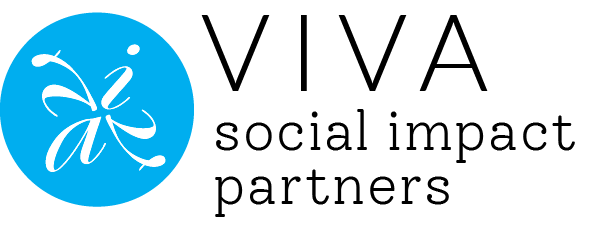
Note: This blog was first written right after COVID-19 stay at home measures went into place. However, in our era of remote and hybrid work, strong virtual meeting skills are an essential part of the work landscape. The tips below still hold true!
In this era of remote work, everyone from internal teams to systems partners will rely on virtual collaboration more than ever before. To help make this transition as smooth as possible, we’ve pulled together VIVA’s top seven tips for successful virtual meetings that connect, inspire, and keep the ball rolling – even when you are not physically in the same space.
1. Define "normal”
Work with your team, organization, and/or partners to co-create “meeting norms.” These represent your group’s processes, preparation, and communication practices that can apply to any meeting, but are particularly important for virtual meetings where an “organizational culture” may not be previously established.
Virtual meeting norms might include asking team members to:
- Select and become proficient in particular default technologies.
- Set dedicated time to test technology and address any technical issues before a meeting begins.
- Find a quiet space to participate.
- Turn on the camera whenever possible.
- Use mute when not speaking.
- “Take roll” and/or do introductions at the beginning of each virtual meeting.
- Always say their names before contributing to a conversation.
- Ban multitasking (checking email, doing other work, etc.).
- Send clear meeting notes within a set timeframe following a meeting.
2. Prepare, then prepare some more
While crafting agendas is an art for successful in-person meetings, virtual meetings require even greater forethought.
- Think through and test the meeting’s materials and technical requirements carefully, particularly when introducing new digital collaboration tools.
- No matter how well you plan, prepare for the worst. Anticipate the need for a plan B and be flexible.
- In addition to circulating a meeting agenda in advance, make sure all attendees are aware of the meeting norms and the technologies they are expected to have in place to participate in the meeting.
3. Demonstrate fearless facilitation
A well-prepared, thoughtful, and confident facilitator is critical for any successful meeting. But in remote meetings, a facilitator’s role is to make sure everyone has a voice at the virtual table. Do not shy away from asking direct questions, calling on participants who have not spoken up, and holding “round robins” where everyone shares their thoughts on agenda items. Just as with in-person meetings, the facilitator must not only hold participants’ attention, they must also hold participants accountable for their contributions.
4. Everyone has a role to play
To increase engagement, assign team members specific meeting roles on a rotating basis. In addition to the facilitator, who is responsible for planning and running the meeting, other roles may include:
- Notetaker – Keeps track of meeting notes, including the elements that are unique to virtual meetings, such as live-capturing brainstorms while screen sharing, taking screenshots of poll results, or archiving chat conversations. The meeting facilitator should connect with the notetaker in advance so they are prepared to support the meeting agenda. After the virtual meeting, the notetaker or the facilitator is responsible for sharing concise notes with participants.
- Timekeeper – Self explanatory, but important.
- Technical support – Ideally someone comfortable with your organization’s technologies who helps others become familiar with virtual meeting platforms and other collaborative tools, as well as help troubleshoot technical issues as they arise.
- The unicorn – Tasked with increasing levity, human connectivity, and engagement. The unicorn might meet their objectives by sharing a positive news story, a silly meme, or an uplifting video, or they could host a 30-second virtual dance party…Get creative! It’s not all fun and games for the unicorn though, they are also responsible for courteously supporting the facilitator to keep meetings on track by ensuring the group adheres to the meeting norms and objectives.
5. Develop new techniques for old tricks
In face-to-face meetings, facilitators use techniques such as brainstorming, voting, and energizers when they need to draw out new ideas, collect instant feedback, sense the energy in the room is starting to wane, or notice the conversation has steered off course. Those tools are still valid, but will require a modified approach.
- Take the time to define the needs of your team, research the virtual collaboration technologies available, and learn the features of your teams’ chosen platforms.
- Instruct participants to use the built-in feedback features of virtual meeting platforms, such as Zoom, to signal if they would like to raise a hand, clap in appreciation or agreement, or ask the facilitator to slow up or down.
- Virtual meeting platforms also allow participants to chat, share files and photos, join virtual breakout sessions, vote in a poll, collaborate on a whiteboard, and more. Based on the size and objectives of your meeting, there is likely a digital solution that will effectively simulate (or enhance) the same collaborative techniques that would be used in-person.
- When it comes to regaining energy, sometimes simply asking participants to stand, stretch, and take a few intentional breaths could be all they need to regain focus. It’s worth a try, right?
6. Get better together
Virtual meetings are new for many people, and we’re all learning together. To accelerate your skills, build in a few minutes at the beginning of meeting agendas to connect and check-in on what attendees hope to accomplish in the meeting, and then follow-up at the end to collect feedback on the meeting content, format, and technologies. Work together to develop solutions to any issues that come to light and ideas for maximizing your next virtual touchpoint.
7. Document, document, document
After the meeting, the facilitator or the notetaker are responsible for editing and disseminating meeting notes that summarize the meeting’s participants, discussions, decisions, and next steps. Timely notes that are complete yet concise, and have clear owners and timelines for next steps, ensure everyone stays on the same page.
We’d love to hear from you!
Have you found virtual collaboration practices or platforms that work well for your team, organization, or partnership? We’d love to hear your top tips for virtual meeting facilitation on our LinkedIn page.
